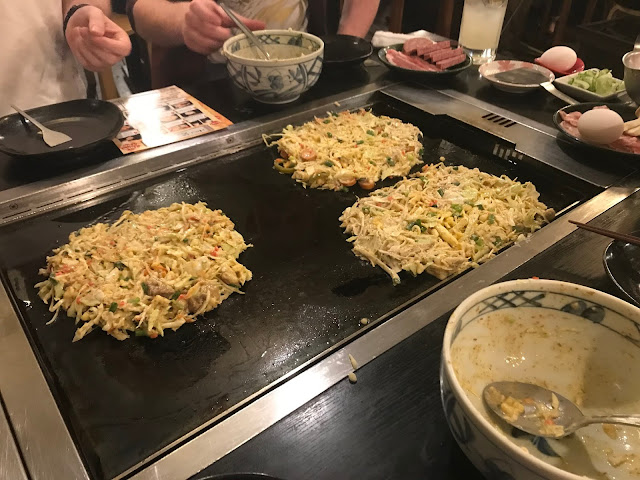But anyone halfway interested in udon and the London food scene would know about Koya. The original branch opened next door to Koya Bar, in Soho, to some serious acclaim in 2010. The noodles were novel; people couldn't get enough of dipping and slurping, and the cold offerings were a smash-hit in the summer. There was no Japanese restaurant like it. It closed to much weeping and gnashing of teeth, but Koya Bar continued to trade in the area and Koya City was opened in late 2017 in the Bloomberg Arcade.
Koya has been reviewed hundreds of times over, and of course it was on my list of places to try. My brother and I picked a good day to visit, a windy, wet September Friday that would drive anyone to the bottom of a bowl of ramen. We rocked up at peak lunchtime, shortly after 1pm, but there wasn't much of a queue, about six people deep -- yes, out the door, but that's due to the minuscule space between the entrance and the dining room. We waited perhaps ten or fifteen minutes before being seated alongside each other at the bar.
The menu offers plenty of choice for any diner: variations on udon, plus rice bowls and a range of small plates. Due to the weather, we both opted for atsu-atsu style udon, that is, udon served in the hot broth; and two small plates of pickles and marinated mushrooms.
 |
| Pickles; marinated mushrooms |
Marinated mushrooms were good, cool but not fridge-cold, with a fun slippery texture. Pickles included some greens and some vibrantly pink daikon. Daikon was especially tasty, with a beautiful crisp bite, though it felt strange to have the fibrous tendril end of the vegetable. Pickling was subtle but effective, as seems typical for Japanese style pickling.
 |
| Kinoko udon, atsu-atsu |
I chose the kinoko (mushroom) udon with walnut miso. The miso is served separately, a deep brown and studded with chunks of walnut. Tasting it on its own, it is deeply flavoured and surprisingly sweet, the nuts not at all bitter and adding a nice bite. This is especially enjoyable when dissolved in the soup, providing a great balance of textures: slick, chewy noodles, slippery mushrooms, and then a sudden crunch from the walnuts. There was a good mix of mushrooms, slices of meaty eryngii and fine, thready enoki. The broth was mild in flavour, but with the addition of the miso and shichimi it was fragrant and savoury, and the last few mouthfuls -- drunk straight from the bowl -- were very nice.
 |
| Buta miso udon, atsu-atsu |
My brother went for the buta miso udon (pork and miso). The pork mince was lovely, again with a surprising natural sweetness in contrast to the savoury broth. He finished it off with no complaints. Both dishes were good, and the udon especially so, which due to its handmade nature varied in thickness. I would've liked more intensity in the broths themselves, though I was perhaps spoilt by the quality of that which we had in Japan and the memory too fresh.
Service was acceptable, and notably relaxed. In so many of these walk-in only restaurants, with their central location, lack of space, and endless queues, you often feel rushed to order, eat, and pay in thirty minutes. Not so at Koya, where we were allowed to browse the menu at leisure and take our time, though it also serves as the perfect location for a short lunch break as you could easily order up, eat, and be out the door quick-sharp. As long as you avoid the queues, that is.
Decent service, excellent location, good udon. Perhaps a more strongly flavoured broth, such as the curry, would make for a more exciting experience. I don't know if I would suggest it as my number one recommendation for a Japanese meal in London, but they are certainly expert udon-makers. I would love to return to try the tempura, which likewise comes highly recommended.
Date of visit: 27/09/2019
Address: 50 Frith St, Soho, London W1D 4SQ


































